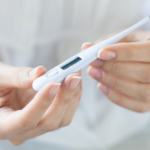“Okay. Fine. I’ll do the bone marrow tomorrow morning.”
The bone marrow was not diagnostic of anything. Burned that bridge, I thought to myself. That’s the last time I’ll be able to convince hematology to perform a procedure they don’t think is indicated.
After his discharge, Leon’s weight dipped below 170 lbs. (from 238 at our first visit, four months before). I continued the prednisone. Without it, he couldn’t get out of bed, with it he could dress himself and sit on the sofa and watch TV. I repeated the stool cultures. The most experienced hospital lab tech pored through the three morning stool samples looking for parasites. Nothing. A gastroenterologist performed a colonoscopy and this was disappointingly “clean as a whistle.”
After a while, Leon got tired of coming to see me. He missed one appointment and then another. I didn’t blame him. Despite the hepatitis C, I suspected he’d said, to hell with it, and gone back to heavy drinking, maybe even reconnected with his old buddies from his heroin days.
One frigid morning in December—seven months after our initial visit, I got a call from Maine Medical Center. Leon had been admitted through the ER four days previously, at death’s door. Could I come and take a look at him?
All through morning office hours, my mind kept returning to Leon’s case. Maybe the answer had been staring at me the entire time. When my last patient of the morning was a no show, I decided to visit Leon over lunch. My first stop: radiology. In the faint white glow of the view box, his chest X-ray from the ER showed why he couldn’t breathe; the right side of his lung was obscured by fluid. The radiologist walked me through the abdominal and chest CT scan ordered on Day 2. The bowels were sitting in a liter or more of free fluid in the abdomen, but there was no sign of an abscess or cancer.
“What’s that?” I pointed to a hazy patch outside the upper right chest beneath the shoulder.
“Lymph node biopsy site. Pathology must have the specimen.” The radiologist turned his head toward me, his face eerily glowing from the back-lighting. “Must be cancer.”
I trudged down the hall. It makes sense that Leon Woodle has cancer. Sometimes we never find the primary source; eventually a lymph node metastasis is the only evidence. At least we have tissue; maybe it’s a treatable form of lymphoma. Inside the pathology office, Dr. Vanderburgh located the lymph node biopsy slides and we sat down at a double-headed microscope. He pointed out clusters of neutrophils and lymphocytes, mast cells and a sprinkling of eosinophils. “It’s an intense inflammatory reaction. No granulomas. No signs of malignant cells.”

